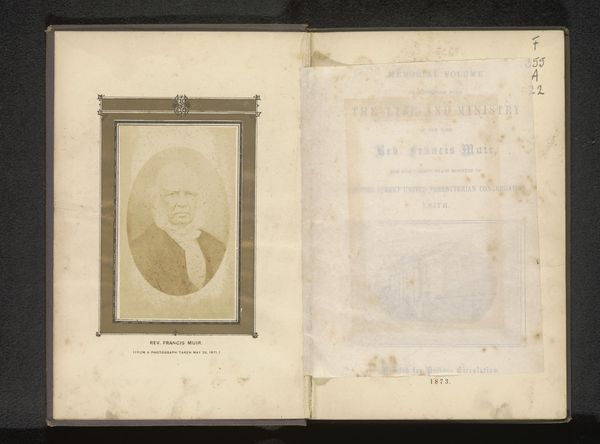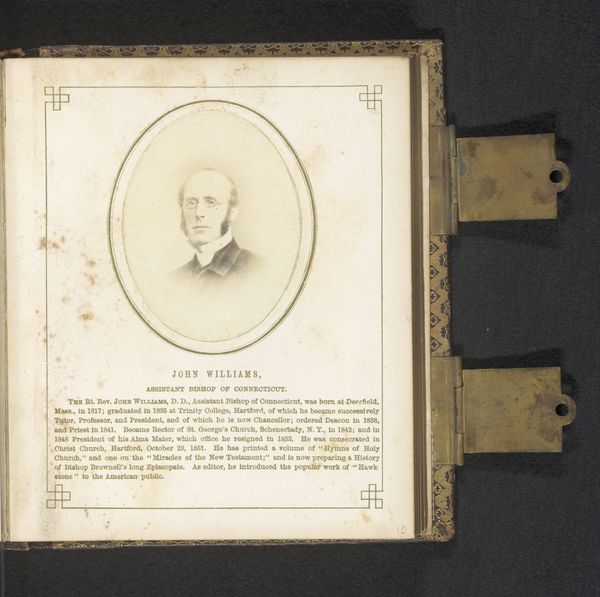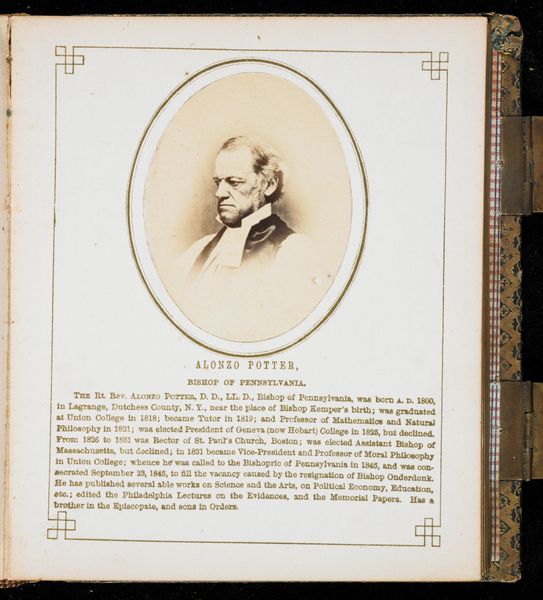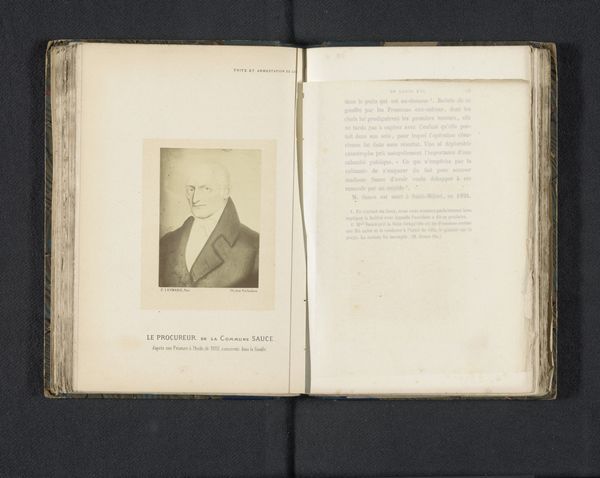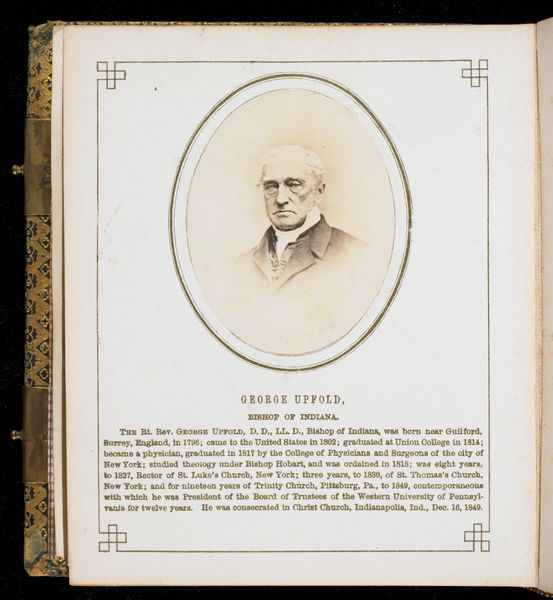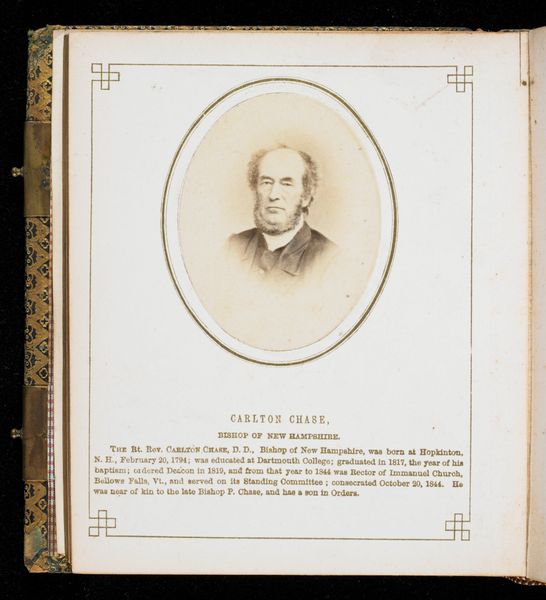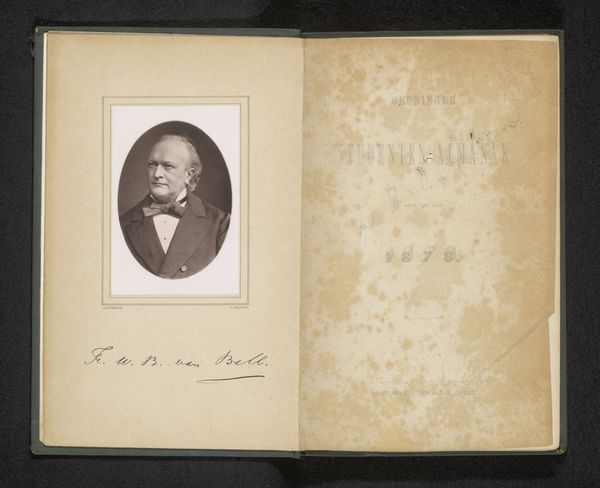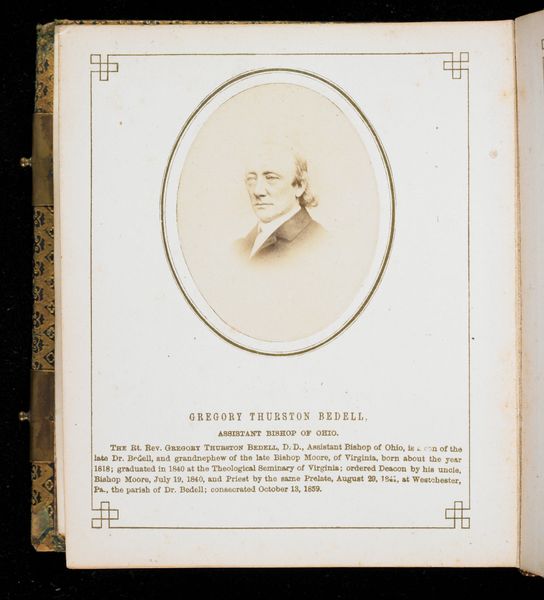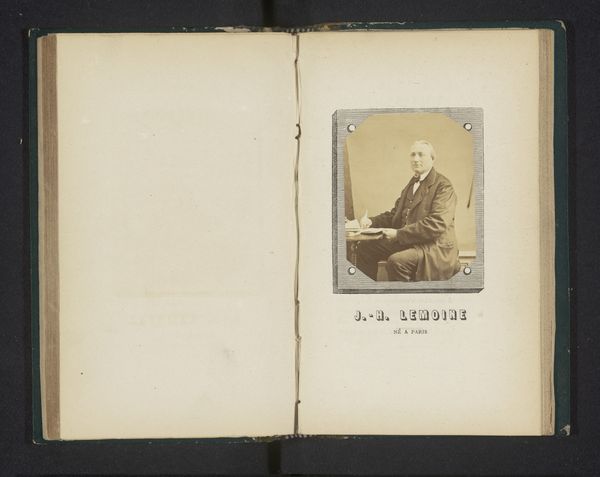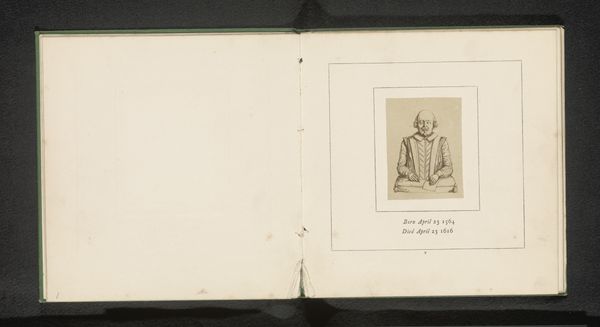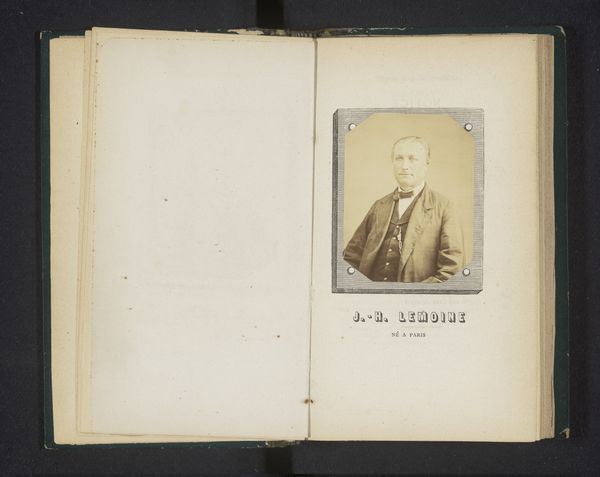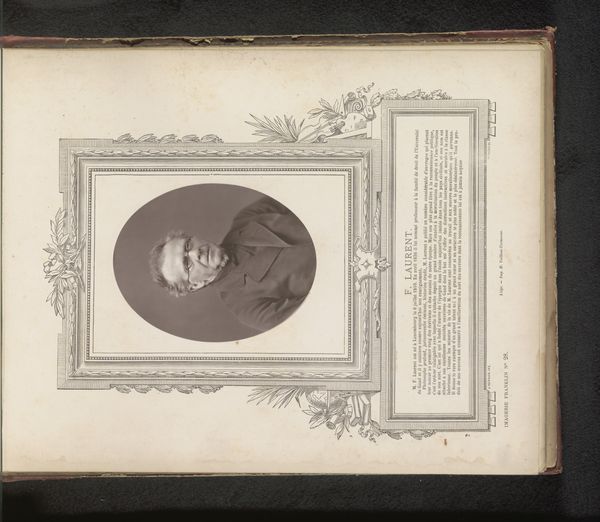
photography
#
portrait
#
photography
#
coloured pencil
Dimensions: height 70 mm, width 53 mm
Copyright: Rijks Museum: Open Domain
Editor: So this is "Portret van Thomas Church Brownell" by J. Gurney & Son, a photographic portrait made before 1861. It's an oval portrait, pasted into a book or album with a descriptive text below. There’s a definite formality and almost a severity to the sitter's expression that stands out. What strikes you about this portrait? Curator: Well, let's consider its function. Photography, especially portraiture, gained immense popularity in the mid-19th century as a means of documenting and disseminating images of prominent individuals. This portrait, appearing in an album, speaks to a desire to memorialize Brownell, a significant figure in the Episcopal Church. Given his roles as Bishop and founder of Trinity College, what do you think the image was supposed to represent about Brownell to its viewers? Editor: I suppose, respect, authority… maybe even a sense of piety? It feels like it’s aiming to present him as a pillar of the community. The description reinforces this. Curator: Precisely. But think about the institutions involved – the Church, the College, and the emerging medium of photography itself. Each carries its own set of power dynamics and aesthetic conventions. How does the photographic process, with its capacity for supposedly objective representation, contribute to or complicate Brownell's projected image of religious and academic authority? Is it a neutral act, or is it politically charged? Editor: I hadn't really thought about the inherent power structures. I guess I just saw it as a straightforward record, but you are right – every choice about how to present someone is an argument, right? Curator: Absolutely. Even the act of selecting and displaying this image serves a specific purpose within a specific community. It prompts us to consider how portraits can actively shape public perception and contribute to the construction of historical narratives. Editor: This has definitely shifted my perspective on how to interpret these kinds of historical portraits, and how even 'objective' media participates in those social currents.
Comments
No comments
Be the first to comment and join the conversation on the ultimate creative platform.

